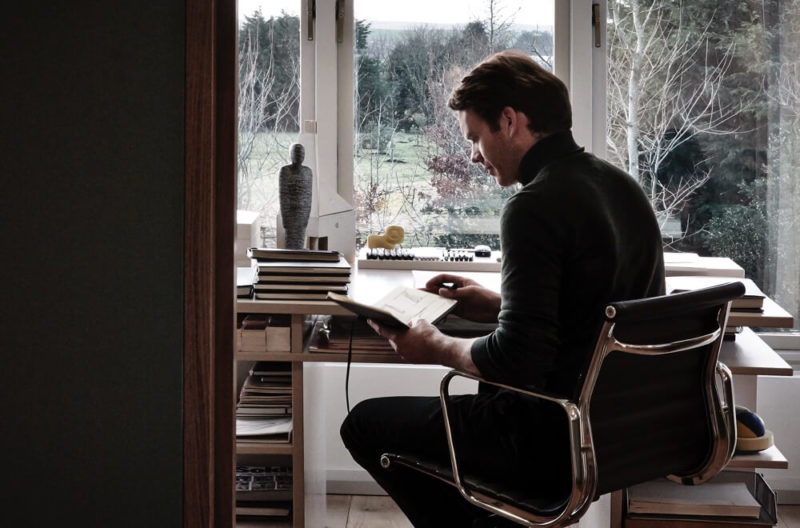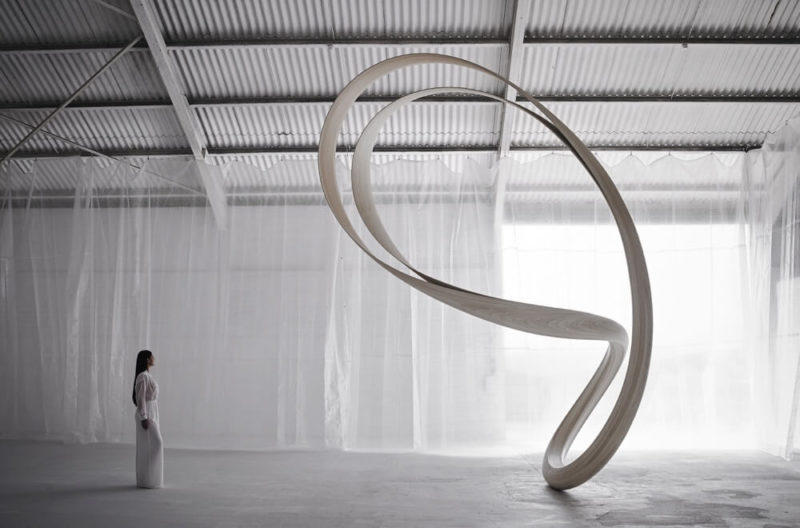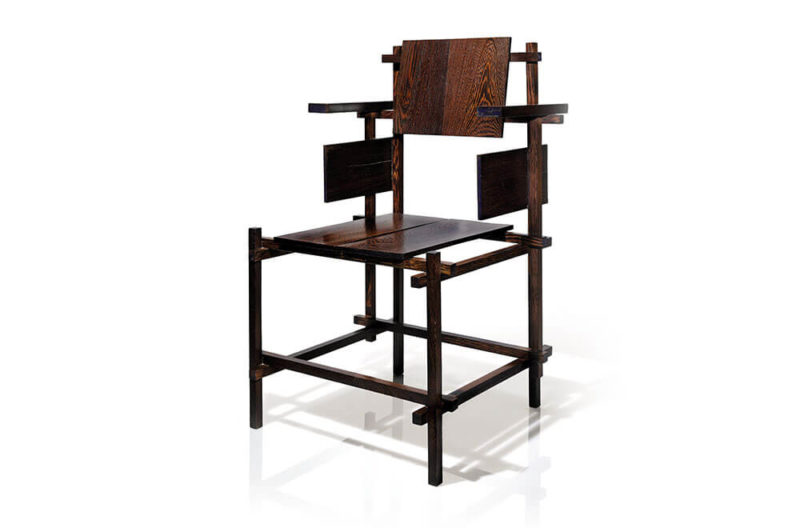Bodo Sperlein / Contour
“If someone is touching my piece, I’ve already won.”
Les Ateliers Courbet
9th November 2021 – 6th January 2022
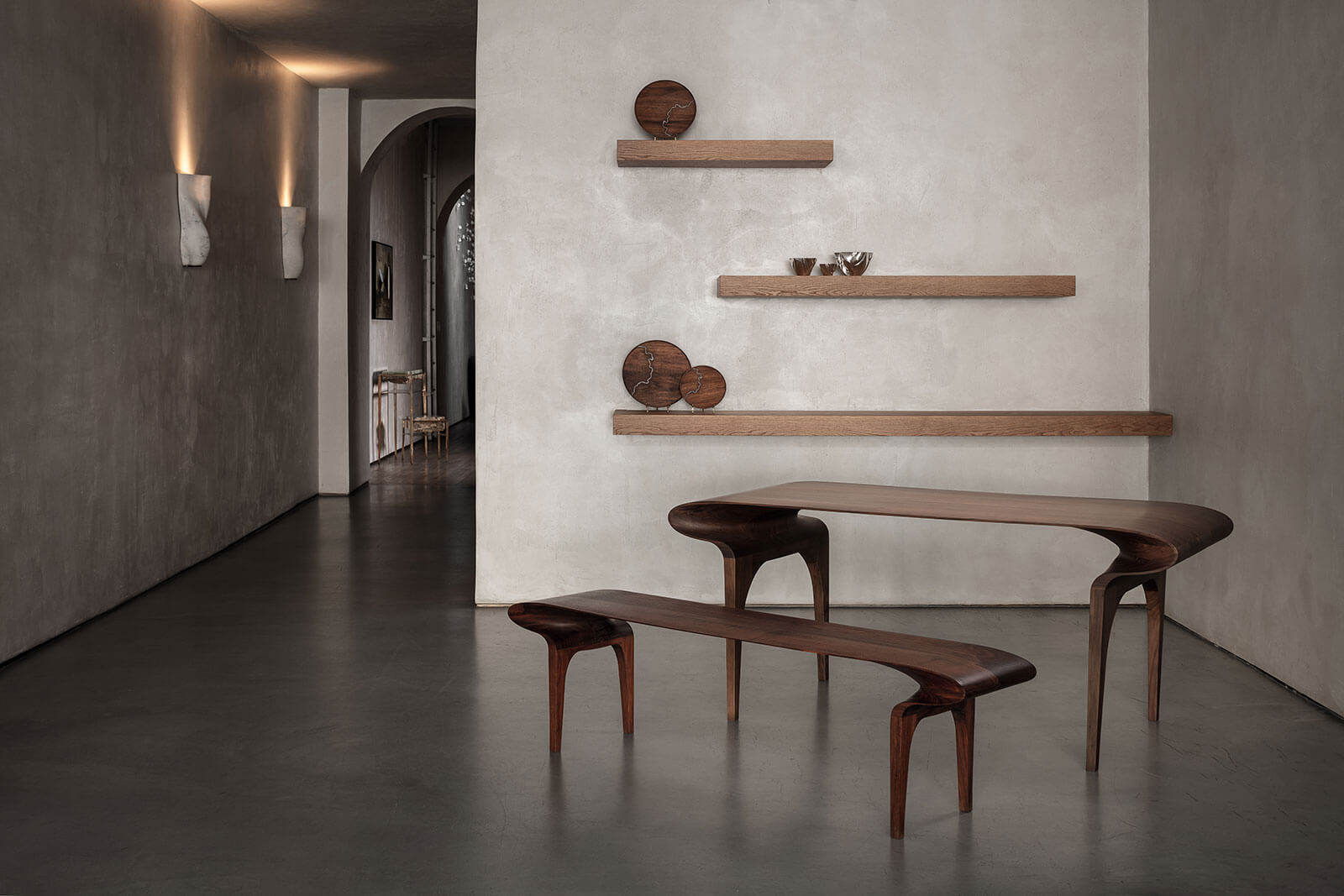
Installation view
COURTESY: Les Ateliers Courbet
DESIGNER BODO SPERLEIN’S objects – whether a silver hollowware or a wooden table – commit to a core principle. “All my pieces have to work when not in use,” he tells The Design Edit. The German-born Londoner believes in each object’s life as a sculpture and imagines how a console or lamp is perceived when dormant. “Think of how much space a table occupies – I cannot overlook its visual impact in a room,” he says. At the same time, Sperlein does not hesitate to challenge the sterility attributed to art objects and celebrates the utilitarian tactility of his practice: “If someone is touching my piece, I’ve already won.”
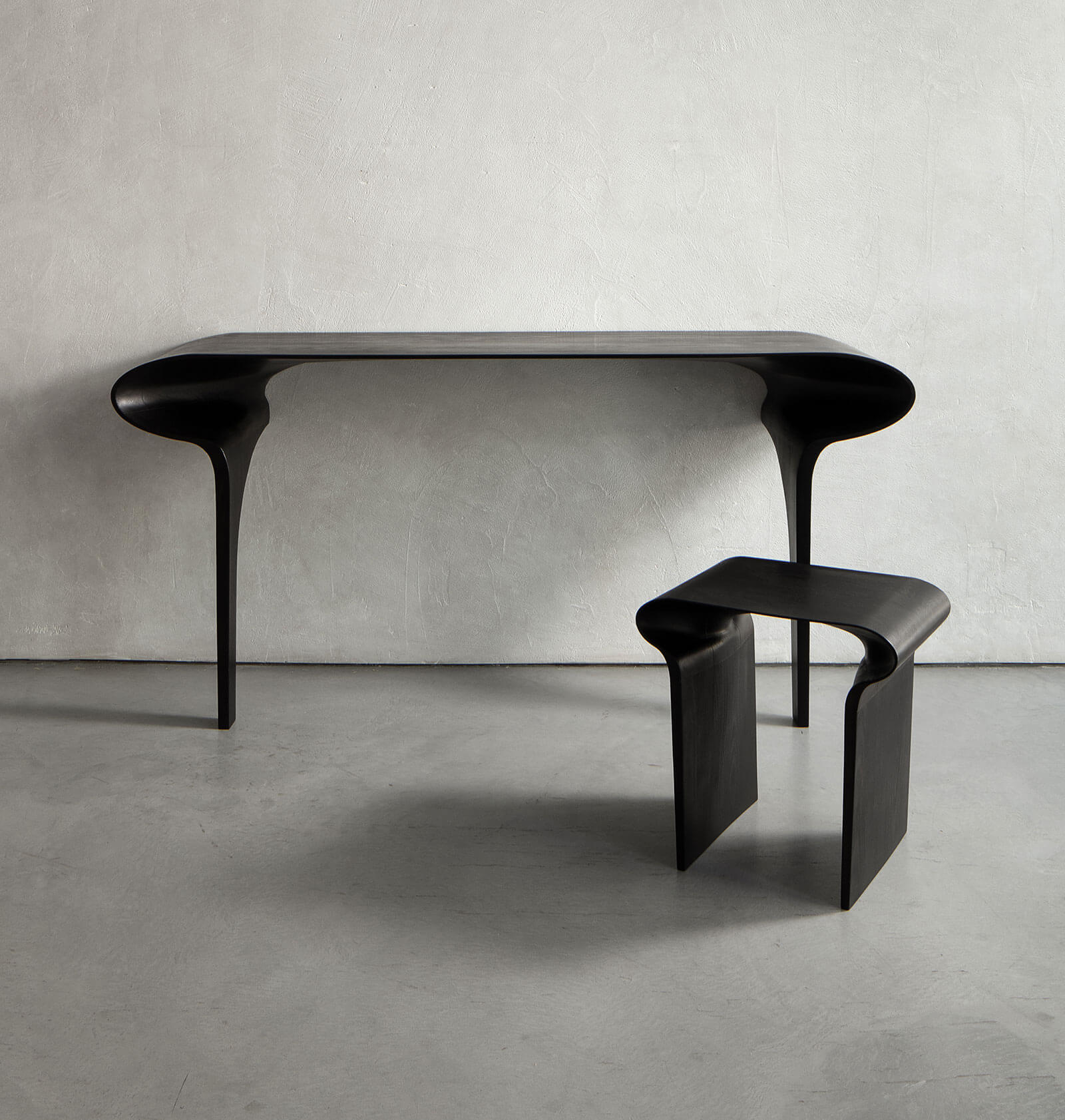
Bodo Sperlein, ‘Contour Console’ and ‘Contour Side Table’, 2009
COURTESY: Les Ateliers Courbet
New York gallery Les Ateliers Courbet’s current exhibition, ‘Contour’, epitomises the reconciliation of these ideas, which Sperlein has achieved throughout his two-decade long career. The designer embarked on the show’s titular series of furniture over a decade ago, driven by an interest in the fluid curvaceousness in wood. “How can I create softness and elation in a natural material?” he asks. The answer lies in a grouping which includes a bench, a large console, a side table, a chair and a desk. Subtly rendered in wood or bronze, the pieces pay homage to sculptural tradition, as well as the early 20th century Viennese architecture movement Secession.
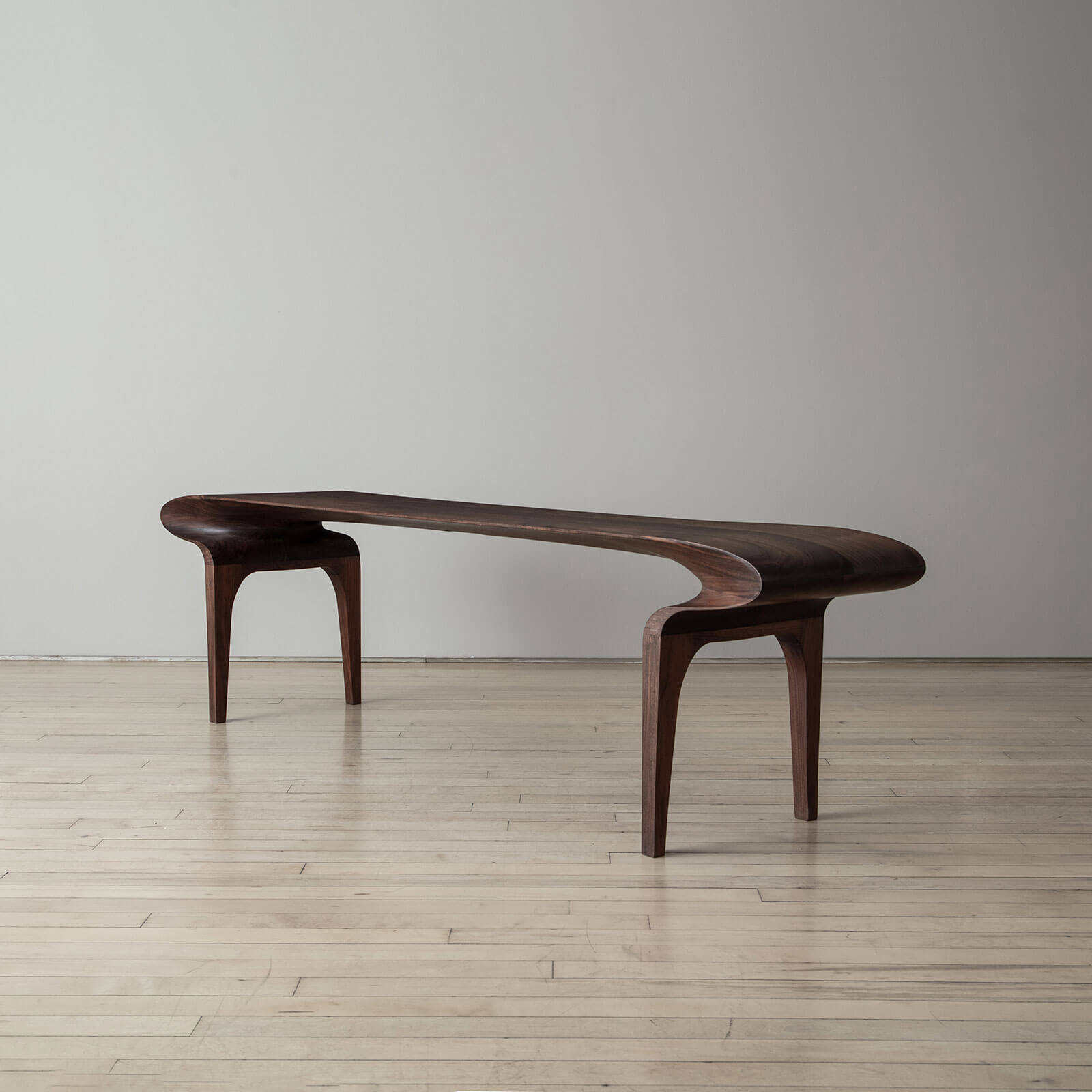
Bodo Sperlein, ‘Contour Bench’, 2009
COURTESY: Les Ateliers Courbet
Sperlein cites Art Nouveau and Japanese craftsmanship as his two main inspirations and considers Secession as their intersection. His fascination comes from the movement’s pairing of Art Nouveau’s elegance with the purist elevation of skill in Japanese craft. “Somewhere right before Modernism, this era connects flamboyance with clean finishes.”
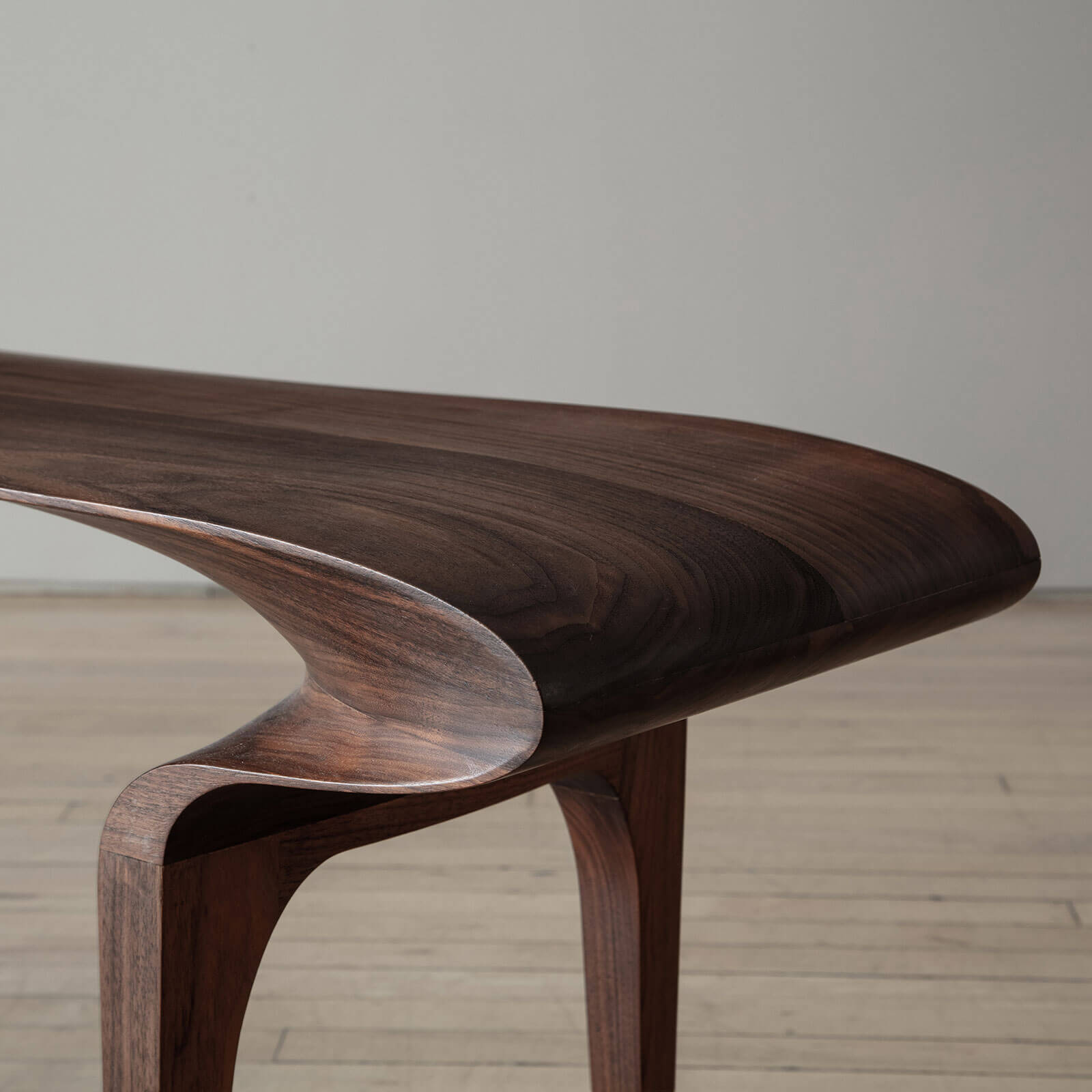
Bodo Sperlein, ‘Contour Bench’, 2009
COURTESY: Les Ateliers Courbet
He sourced the walnut wood from a local merchant in London, where he has been living for twenty-five years. The large desk, bench and the chair developed from a combination of CNN machine technology and the Japanese shou sugi ban technique, which includes charring the surface for a blackened finish. “Those who emerged in the early 2000s, like myself, have the responsibility to adopt technology, while embracing the hundreds of years old heritage,” he says.
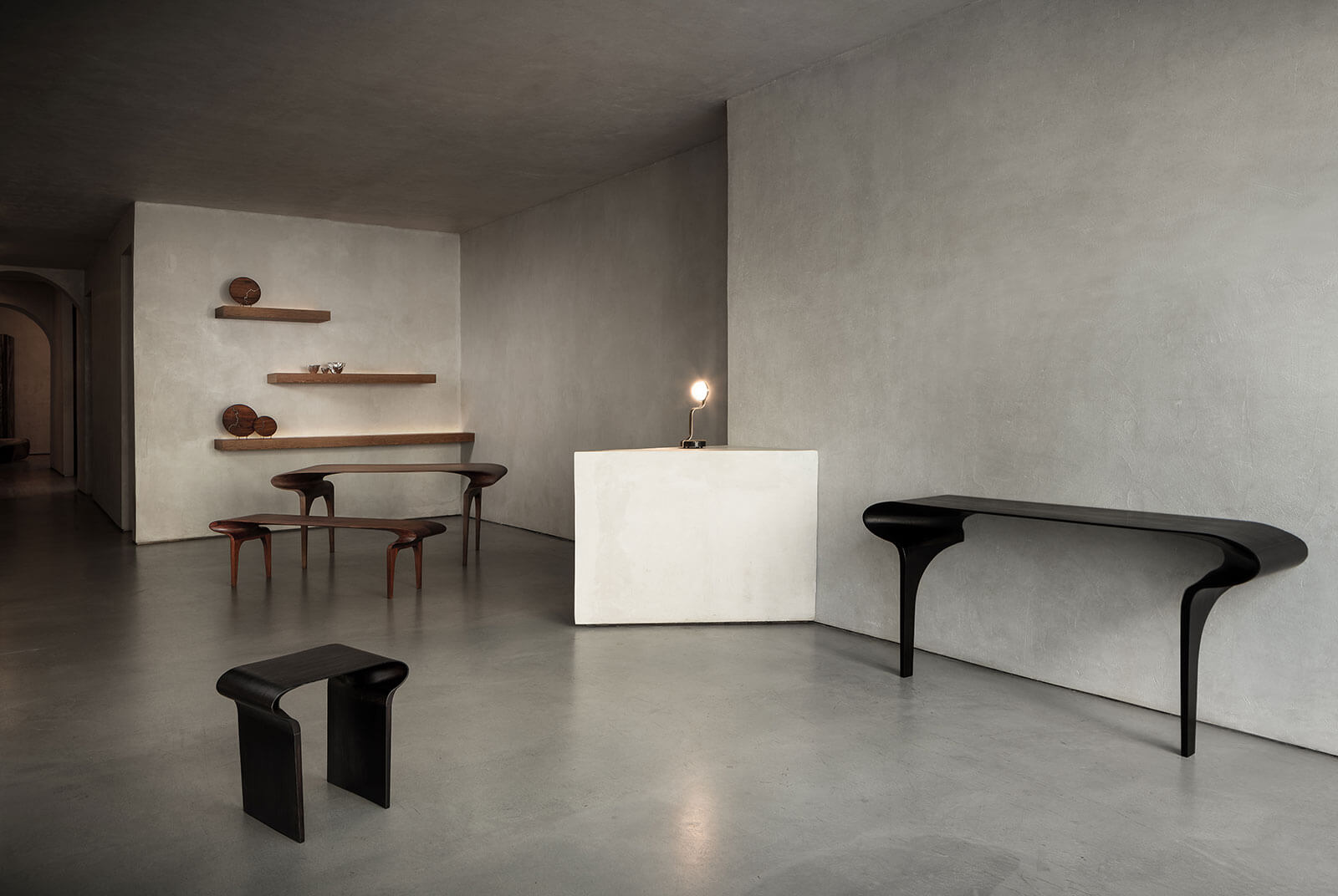
Installation view
COURTESY: Les Ateliers Courbet
Understanding the material is the initial step in Sperlein’s attempt, “and, every material teaches me something.” While the designer’s relationship with wood started with a research scholarship eleven years ago, the bronze side table is a fruit of experiments during the pandemic, when his show was postponed for a year and half. “I realised I could work with bronze in a fragile way too – not in a physical sense, but through testing its thinness,” he says about capturing a feather-like lightness in bronze without compromising stability.
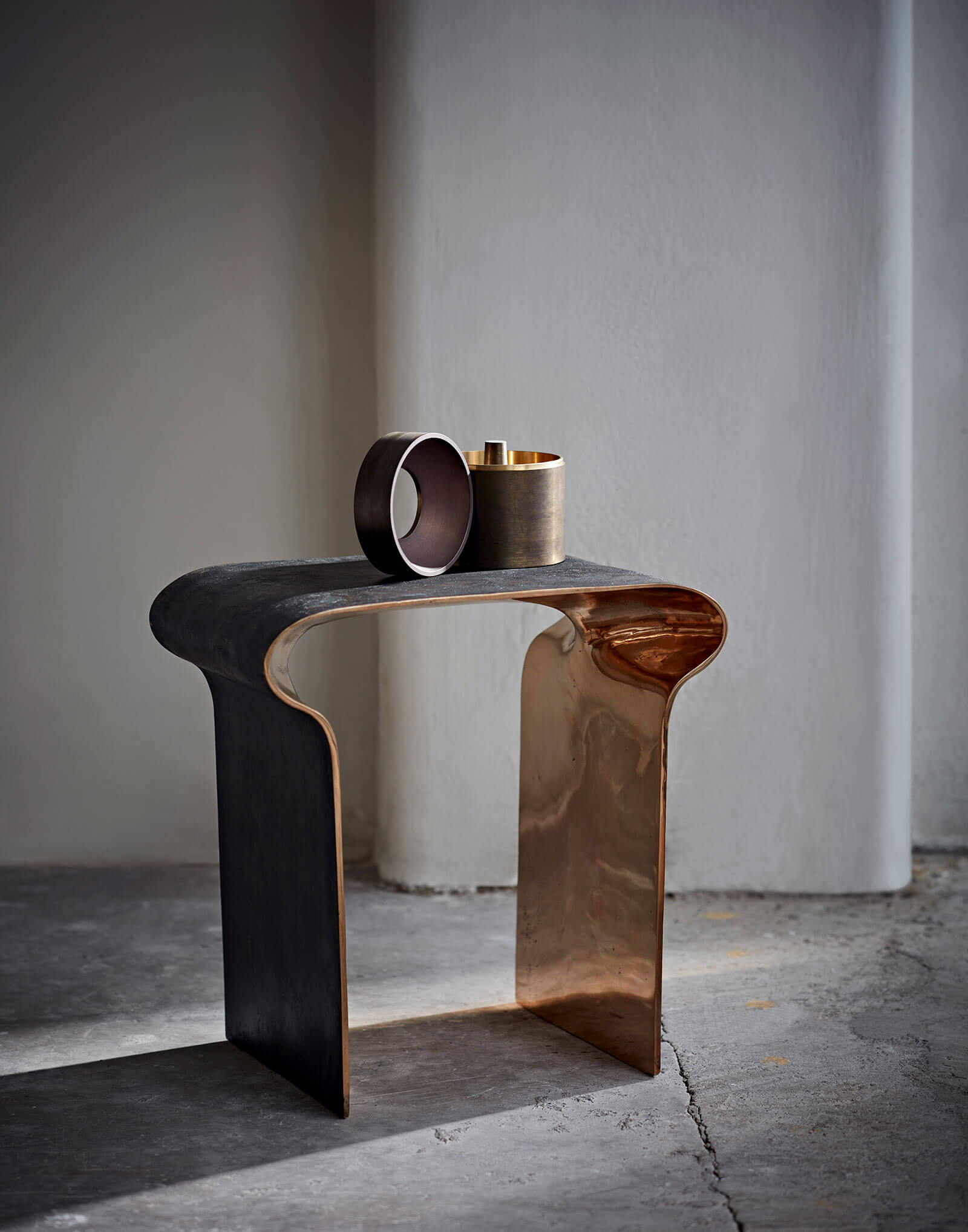
Bodo Sperlein, ‘Contour Side Table’, 2009
COURTESY: Les Ateliers Courbet
Some of Sperlein’s earliest memories of encounters with materials date back to his years at the Camberwell College of Arts, while studying three dimensional design. “We would be taught to train our eyes by collecting treasures from the Thames,” he remembers. The tides would bring objects as old as medieval pottery to the river’s banks.
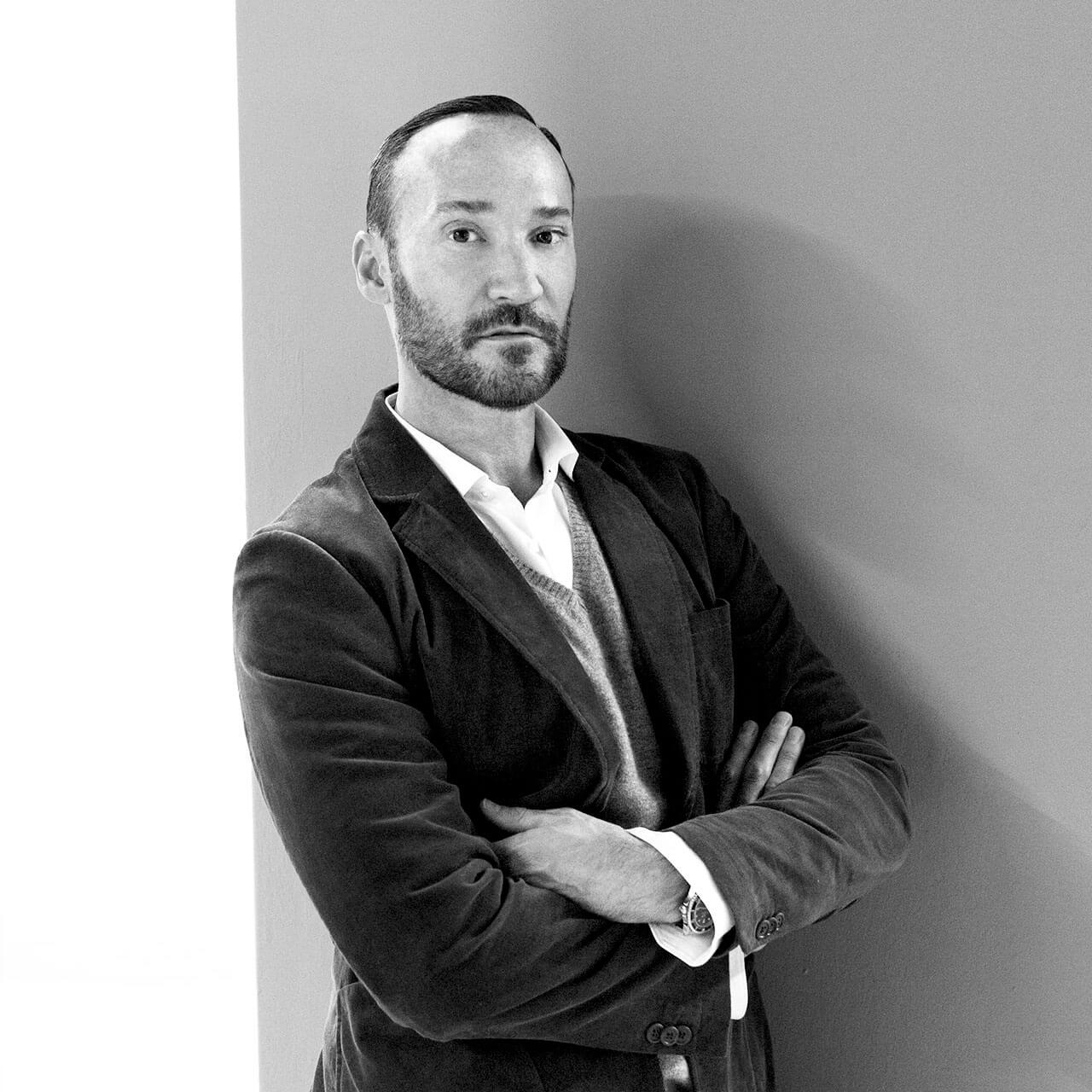
Bodo Sperlein
COURTESY: Les Ateliers Courbet
Today, he still considers London, where he lives in an 18th century mews house, among his main inspirations for a practice in which he bridges the elegance of tradition with an openness to contemporary production. “The future of design cannot just be pushing a button – each material has its own story and heritage celebrates that.”
Sperlein’s understanding of materials is strongly tied to his eagerness to collaborate with the world’s finest artisans. He has designed for the German master ceramicists at DIBBERN, the Japanese manufacturer Nikko and the historic glassmakers Lobmeyr of Austria, always committing to learning new skills and thinking about different alchemies and textures.
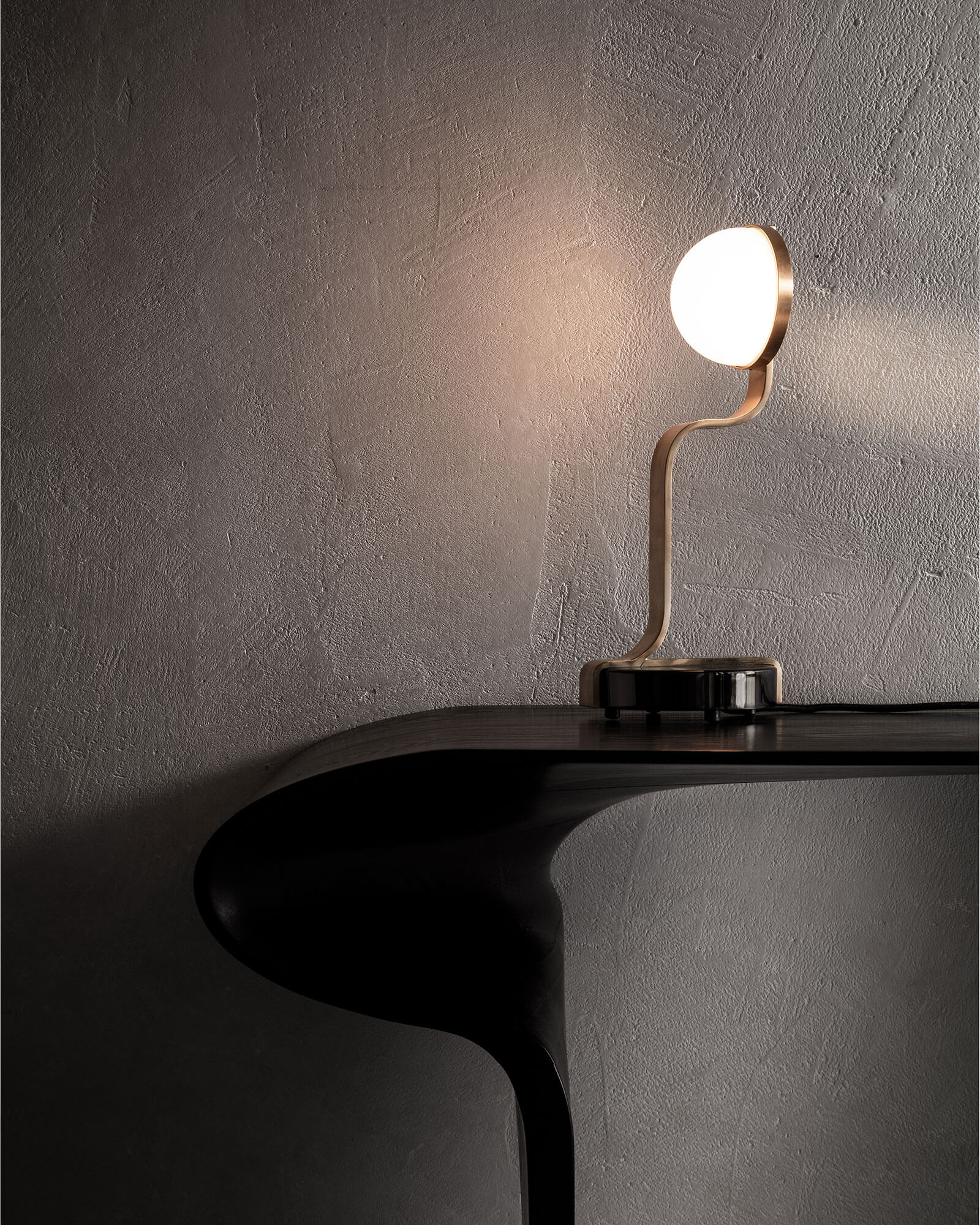
Bodo Sperlein, ‘Contour Console’, 2009; ‘Script Lamp’ for Lobmeyr
COURTESY: Les Ateliers Courbet
For this exhibition, he has collaborated with the storied Mexican silver manufacturer TANE, producing a sixty-piece collection of tableware that taps into the flowing thinness evident in ‘Contour’. The collection is a celebration of table top tradition which he believes has become lost with television culture, but even more so recently with social distancing. “These are conversation pieces that invite people to gather around the table again,” he says.
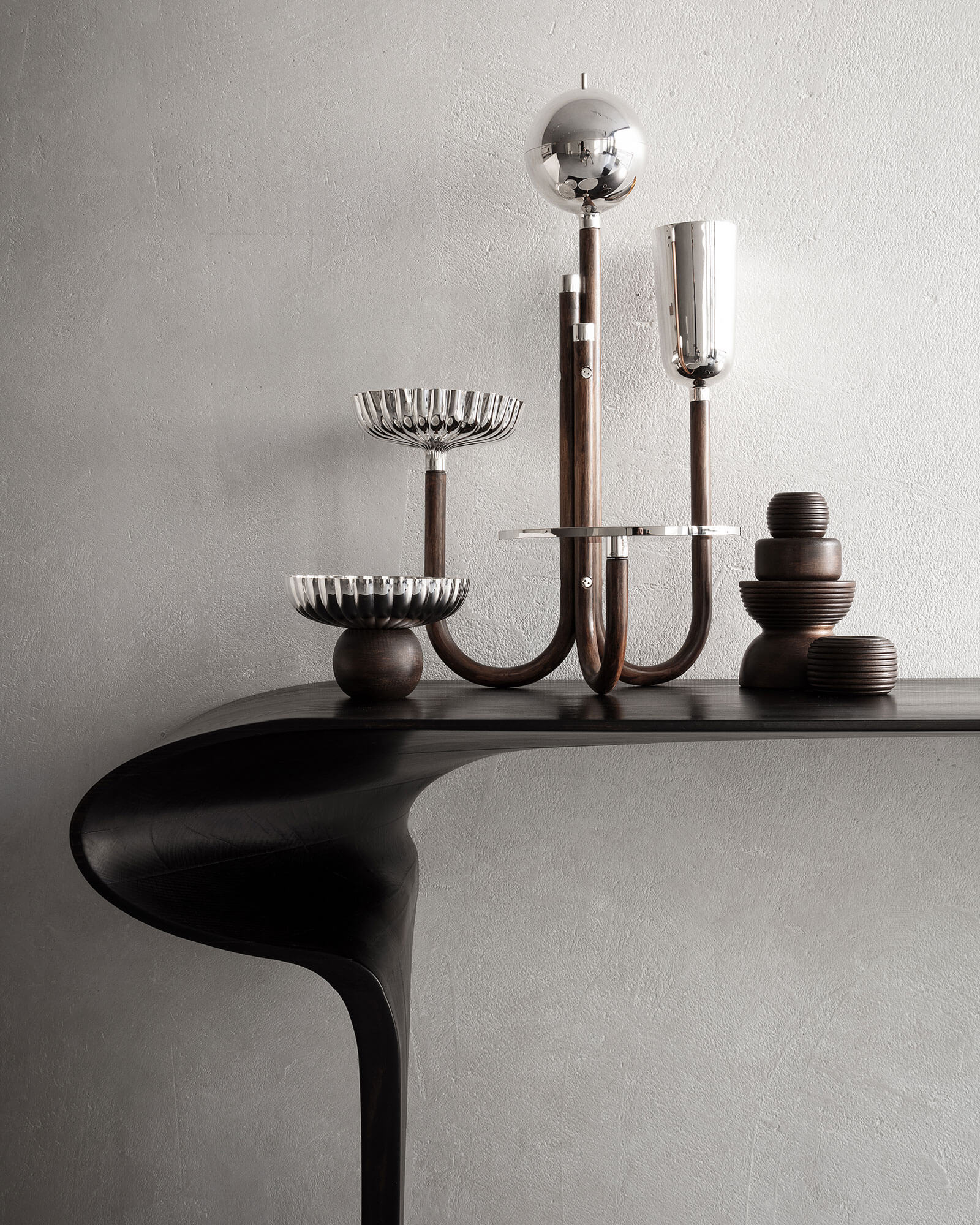
Installation view with ‘Contour Console’, 2009
COURTESY: Les Ateliers Courbet




